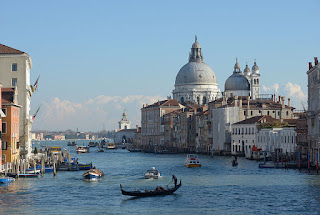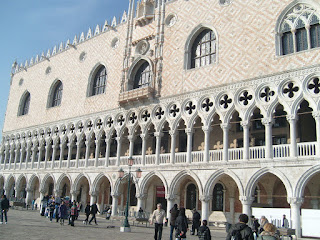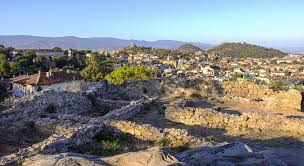How the Venetians
managed to make St. Mark and the winged lion part of their history
Have you ever
wondered why the Venetians named their biggest square and the basilica after
Saint Mark? Why the citizens of the Serenissima claim that their patron saint is
exactly St. Mark? Why everywhere in of City of Lagoons
The answers to these questions can be found,
if we go back in time in 828, when the relics – believed to be St. Mark body –
were stolen from his grave in Alexandria (at the time controlled by the Abbasid
Caliphate) by Rustico da Torcello and Bon da Malamocco. They covered the relics
with a layer of pork and cabbage leaves. Since Muslims are not permitted to
touch pork, this was done to prevent the guards from inspecting the ship's cargo
too closely. Back home their act was justified by using apocryphal tradition
that states when St. Mark was traveling through Europe, he arrived at a lagoon
in Venice, where an angel appeared to him and said: “May Peace be with you,
Mark, my evangelist. Here your body will rest.” And so the saint’s relics,
stolen in Alexandria Venice
The most important
aspect was possession since involved the possessors in care, protection and
worship of the saint, for which they hoped to receive his protection in return.
Exhibiting the relics made participation in worship more effective: it had a
protective purpose and a positive psychological impact on the people, making
them feel safe and protected. Through the saints’ intercession with God the
people could stand up to all evils. St. Mark
protected the Venetians and therefore also their State.
As you can see St.
Mark was chosen from the Venetians to become their patron saint and not vice
versa by some kind of miraculous event. For example Dubrovnik Dubrovnik
Another symbol of
the City of Canals Constantinople
during its looting in 1204 by the Venetians, who carried it back home. It is
believed that the origin of the winged lion is Persian. Alexander the Great
took it from there.
The story of the
statue is full of wars and robberies. Even when Napoleon conquers Venice , takes the winged lion to Paris
in 19th century and gives order of destruction of over 1000 statues
of the same lion across all Venice Water
There is another
version of how the winged lion became a symbol of Venice Venetian
Republic
Nowadays the original
figure is well kept in the St. Mark’s Basilica, but copies can be seen in many
places in Venice
 |
| Grand Canal |
 |
| Doge's palace |
 |
| The winged lion in Venice |
 |
| Flag of Venice |
| Piazza San Marco, Venice |
 |
| St. Marco's Basalica in Venice |
Sources:
www.basilicasanmarco.it
www.europeforvisitors.com/venice


























